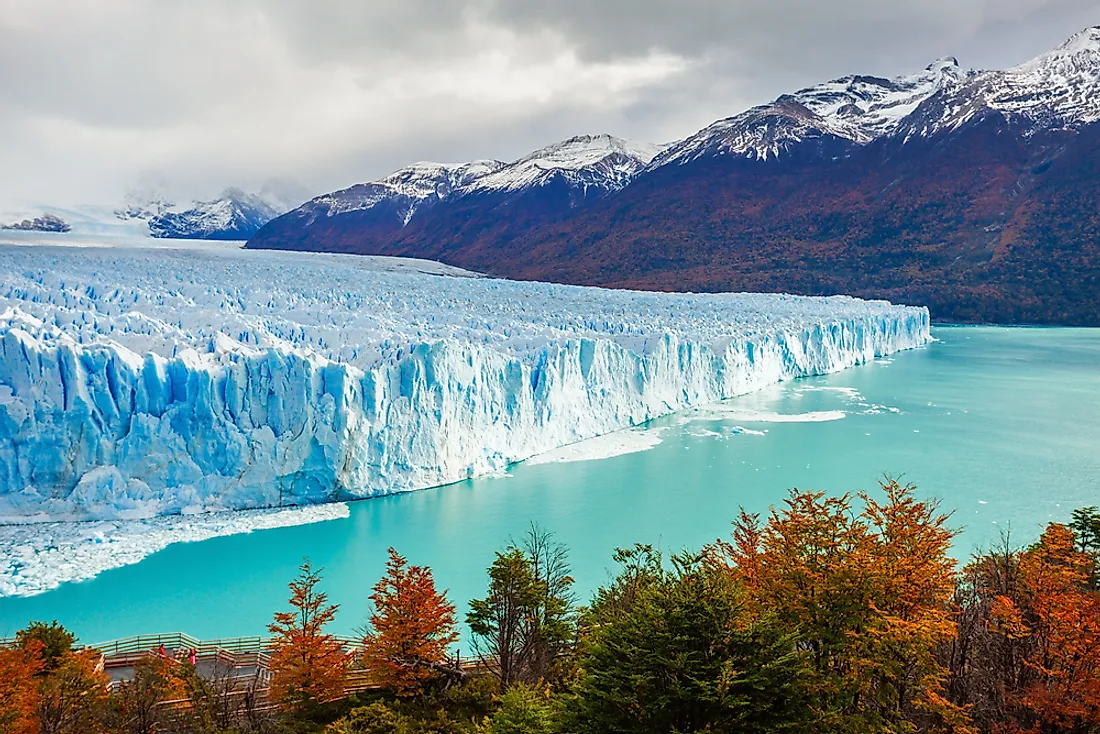What Percentage Of Earth's Water Is Frozen?

From space, the earth looks like a majestic blue bubble, the blue color of the earth is because of reflection of the light from the planet’s massive oceans. About 71% of the planet is covered by water while the rest is land. Water is considered a finite source; it circulates across the oceans, land surface and underground. The bottled water we drink was once flowing in the rivers and existed in the atmosphere as water vapor before cooling a trickling down as rain. The earth’s water has existed for billions of years. Researchers are yet to determine where exactly the water came from but it is theorized that it might have been carried into the earth by meteors and meteorites during the early years of the planet. No water leaves or enters the earth’s atmosphere. The hydrologic cycle cleans and replenishes the planet’s water.
Distribution of Earth's Water
Despite the abundance of water on the planet, humanity is threatened by lack of clean drinking water. This is because only 0.3% of the planet's water is accessible and usable by living things. About 99.7% of the water lies in the oceans, soil, icecaps, and as vapor in the atmosphere. Approximately 96.5% of the planet’s water lies in the ocean, 0.9% lies in other saline water bodies such as salty lakes while 2.5% is fresh water. Of the freshwater, 68.7% is contained in glaciers and ice caps, 30.1% is underground water, and 1.2% is fresh surface water. Of the surface water, 69% is groundwater and permafrost, 20.9% lies in lakes, 3.8% lies in the soil, 2.6% in swamps and marshes 0.49% in rivers, 0.26% is contained in living things, and 3.0% exists as water vapor.
How Much of Earth's Water Is Frozen?
Much of earth's ice is held in two ice sheets, one in Antarctica and one in Greenland. The Antarctica ice sheet contains about 90% of the total global ice mass, while the Greenland ice sheet contains about 10%. The Greenland ice sheet ranges from 5,000 to 14,000 feet in thickness in some places. Smaller glaciers are also found on every continent on earth, in about 50 countries, with notable glaciers in Iceland, Canada, Chile, Argentina, and the US state of Alaska.
Source of Earth’s Water
The origin of water on the planet is a mystery but is well known that the earth has more water than any other rocky planet in our solar system. Researchers theorize water reached the planet from water-rich icy comets, meteoroids and trans-Neptunian objects. It was first thought that the water arrived after the earth formed but recent research by the Woods Hole Oceanographic Institution have shown that water was part of the earth’s formation process. Earth’s sister, planet Mars, has exhibited signs that rivers and lakes once traversed it. The planet’s thin atmosphere is thought to have been unable to hold on to the water. Further study of the planet has revealed that the planet has frozen water below the surface of its polar region. In 2008-2009 researchers analyzed parts of the moon’s surface, and the samples collected from the Apollo missions and revealed that the moon’s surface is wetter than previously thought.











